

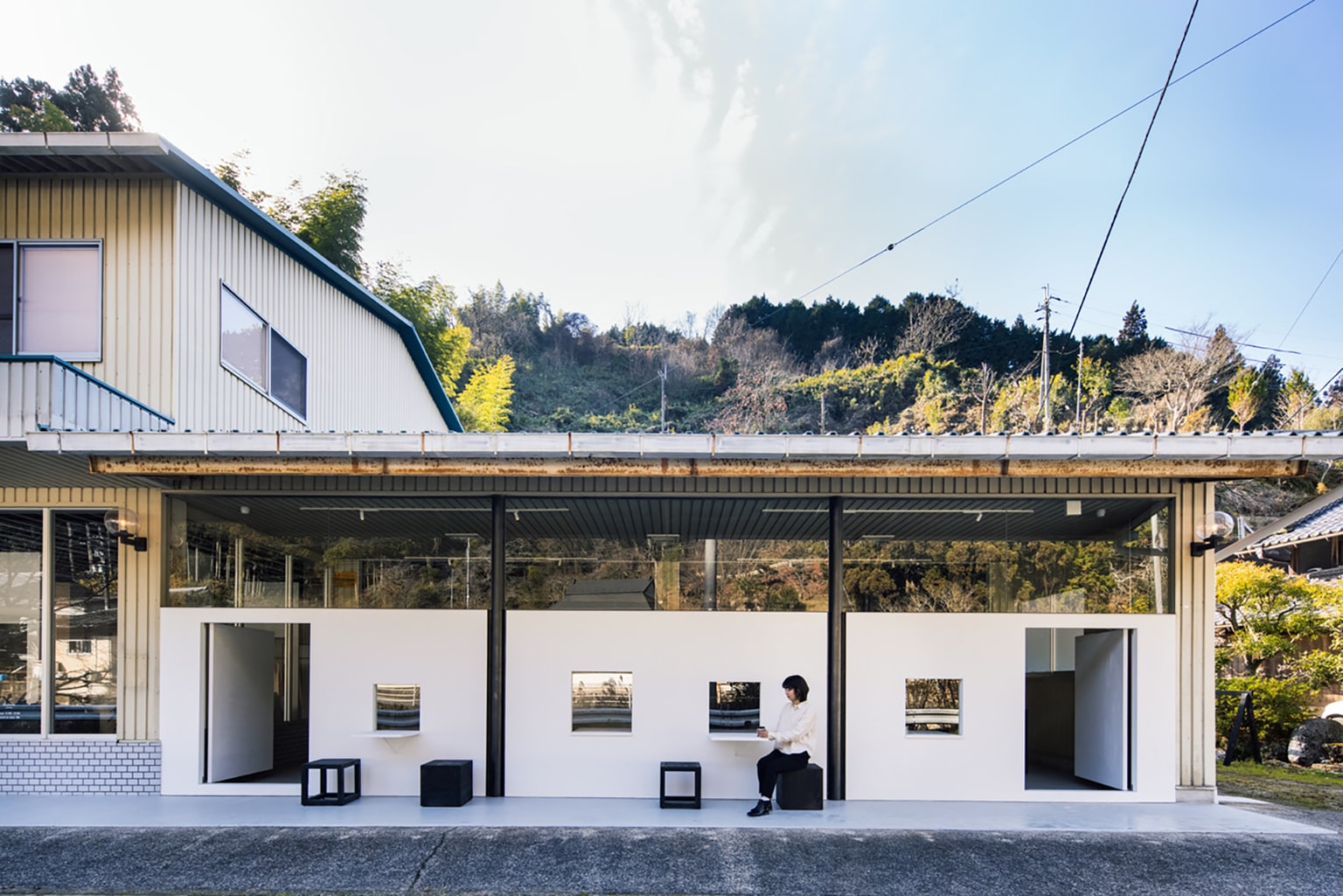
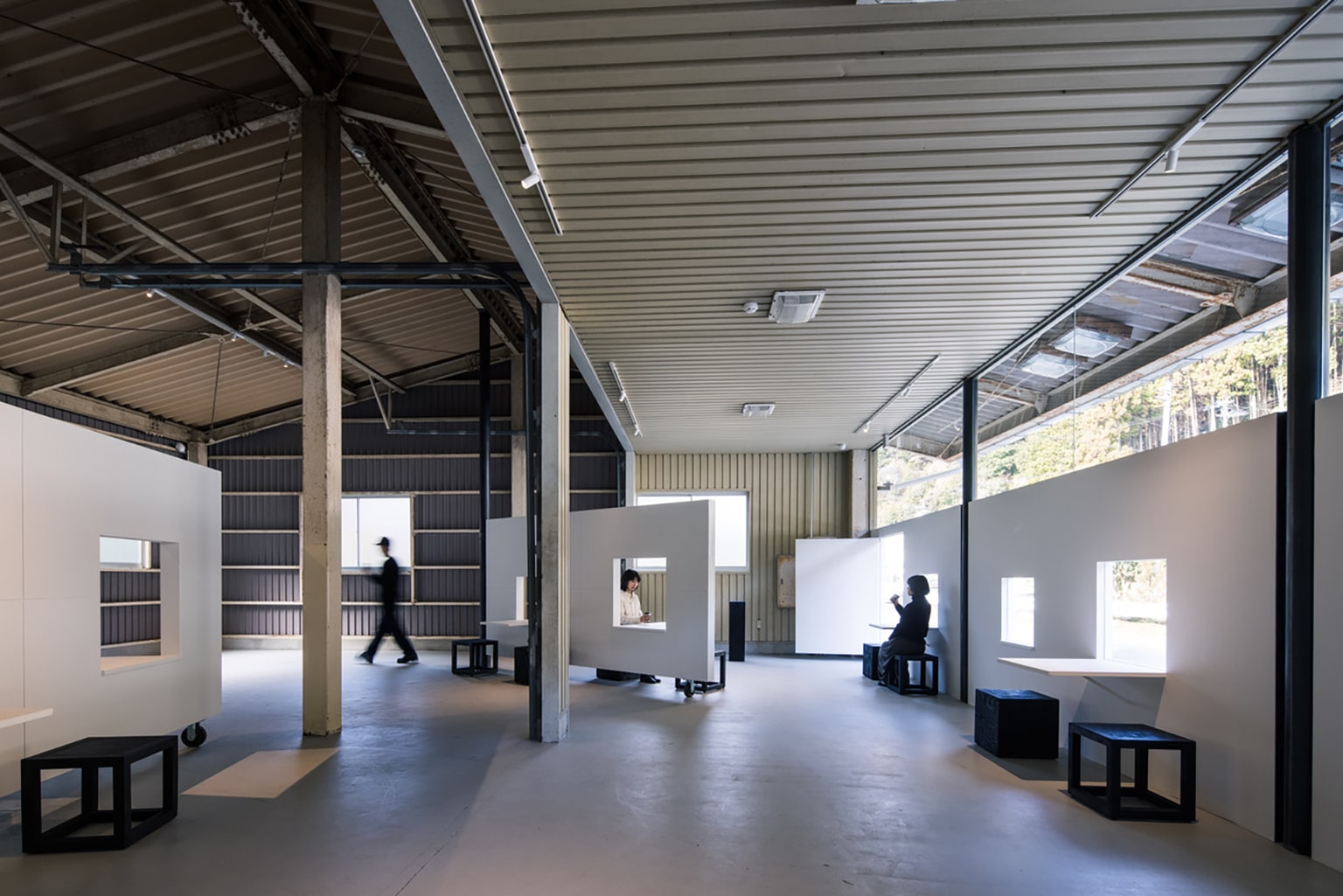
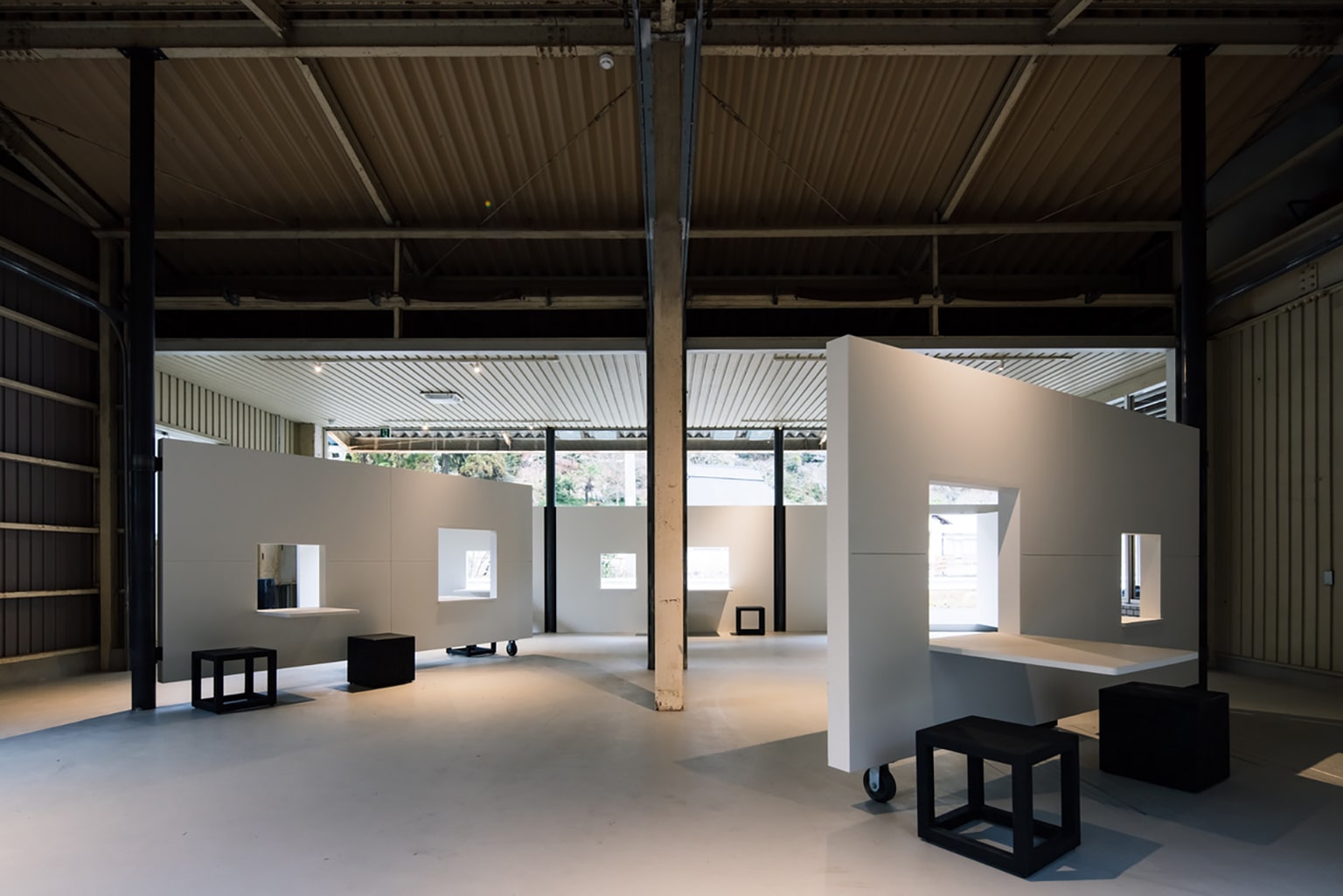
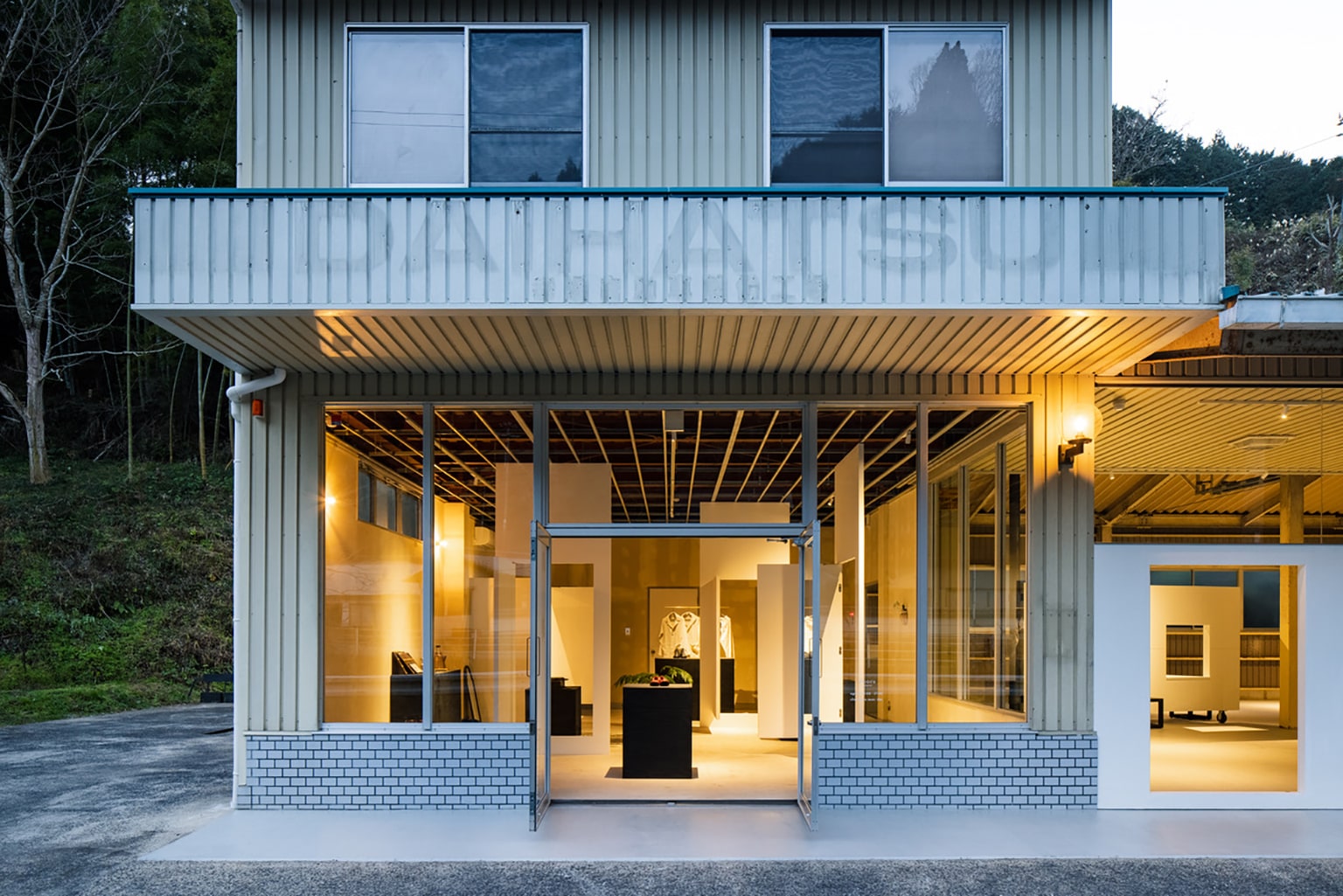
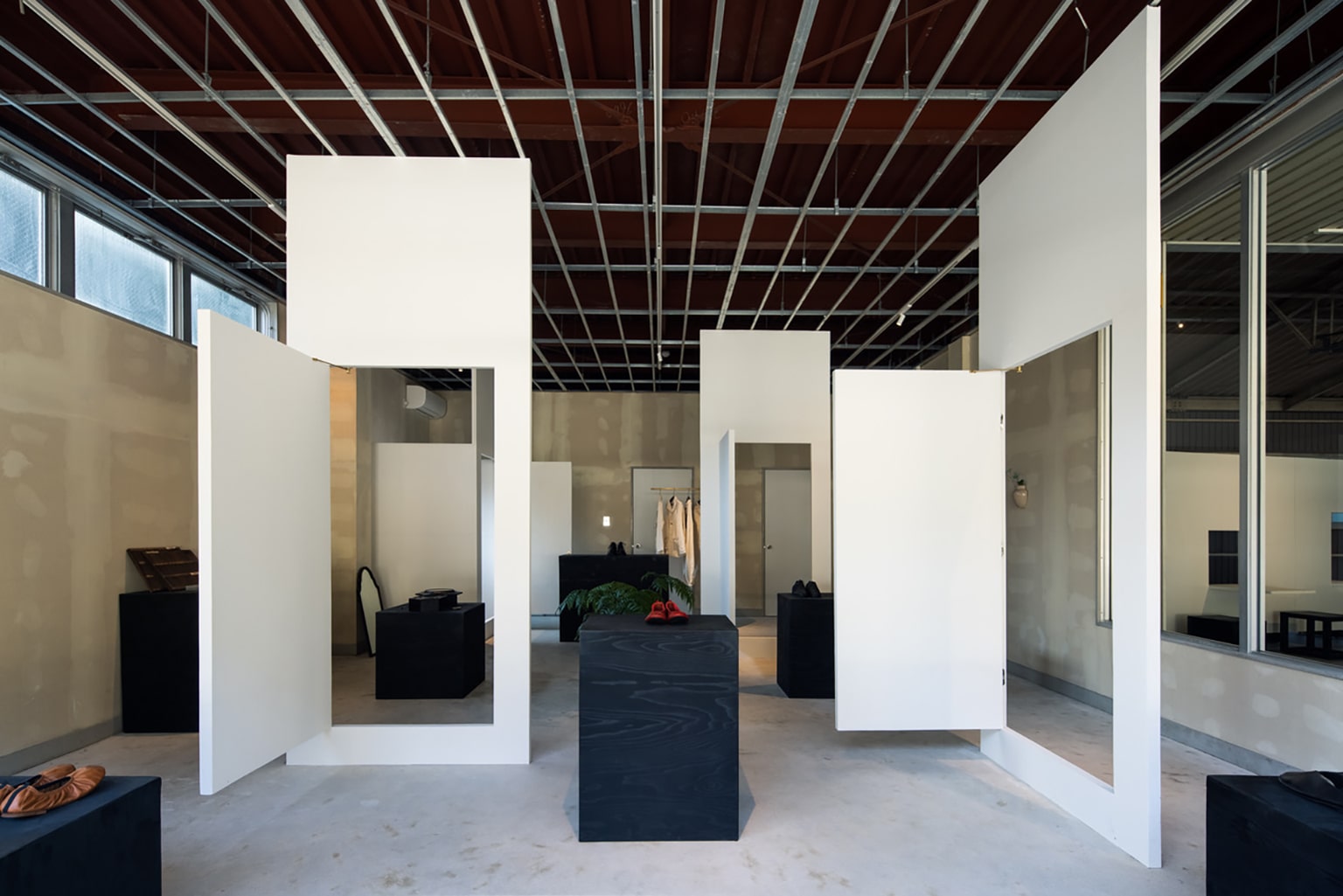
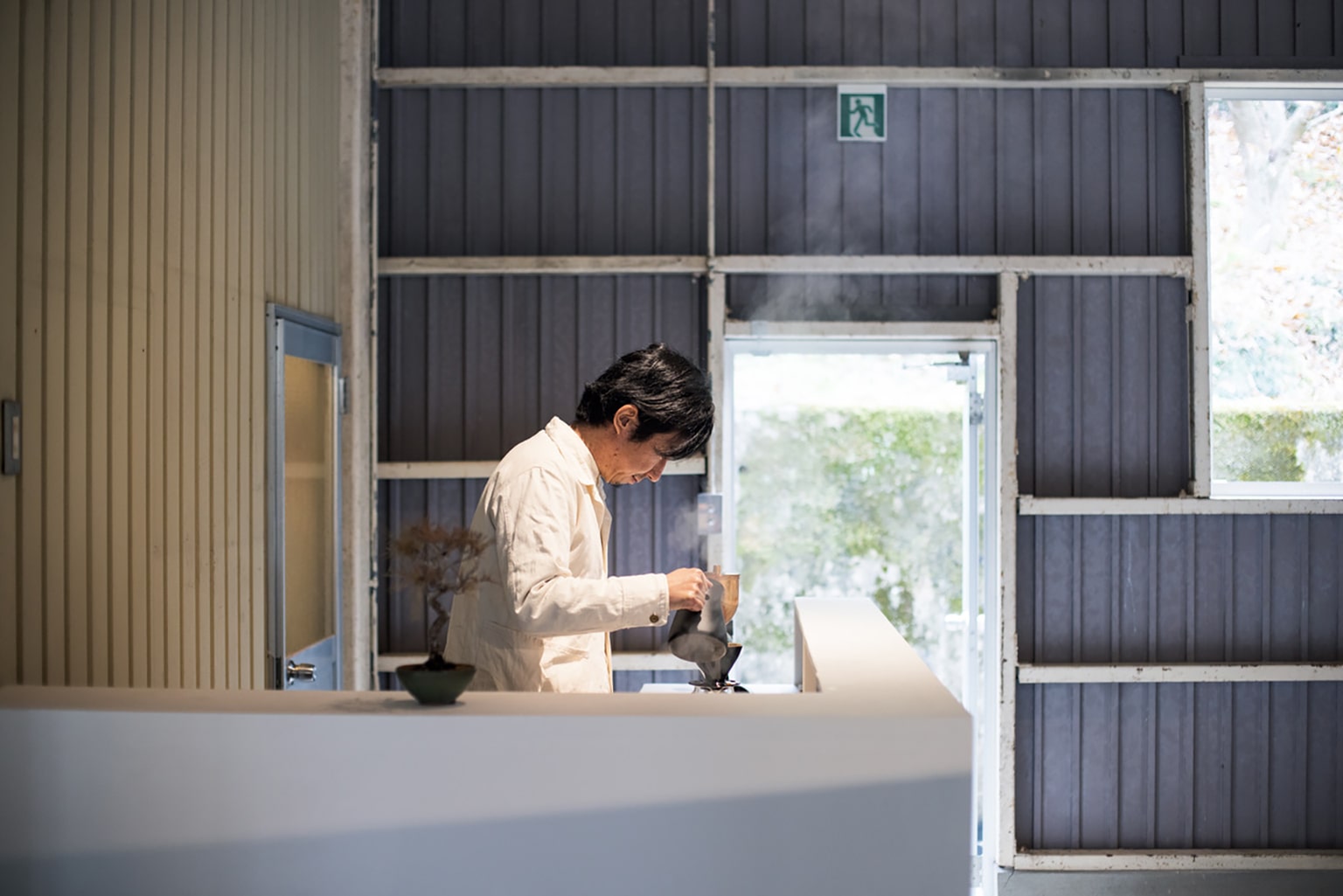
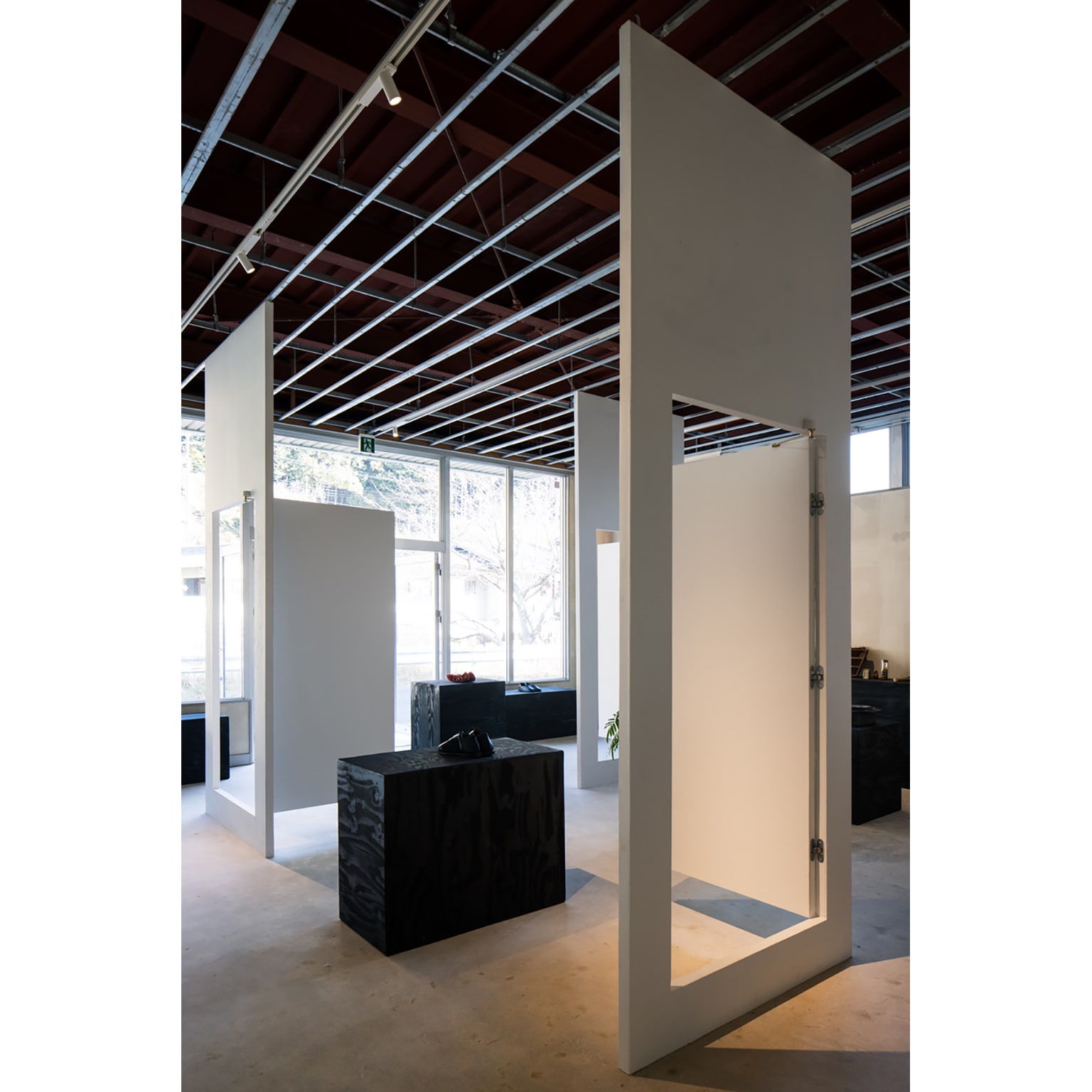
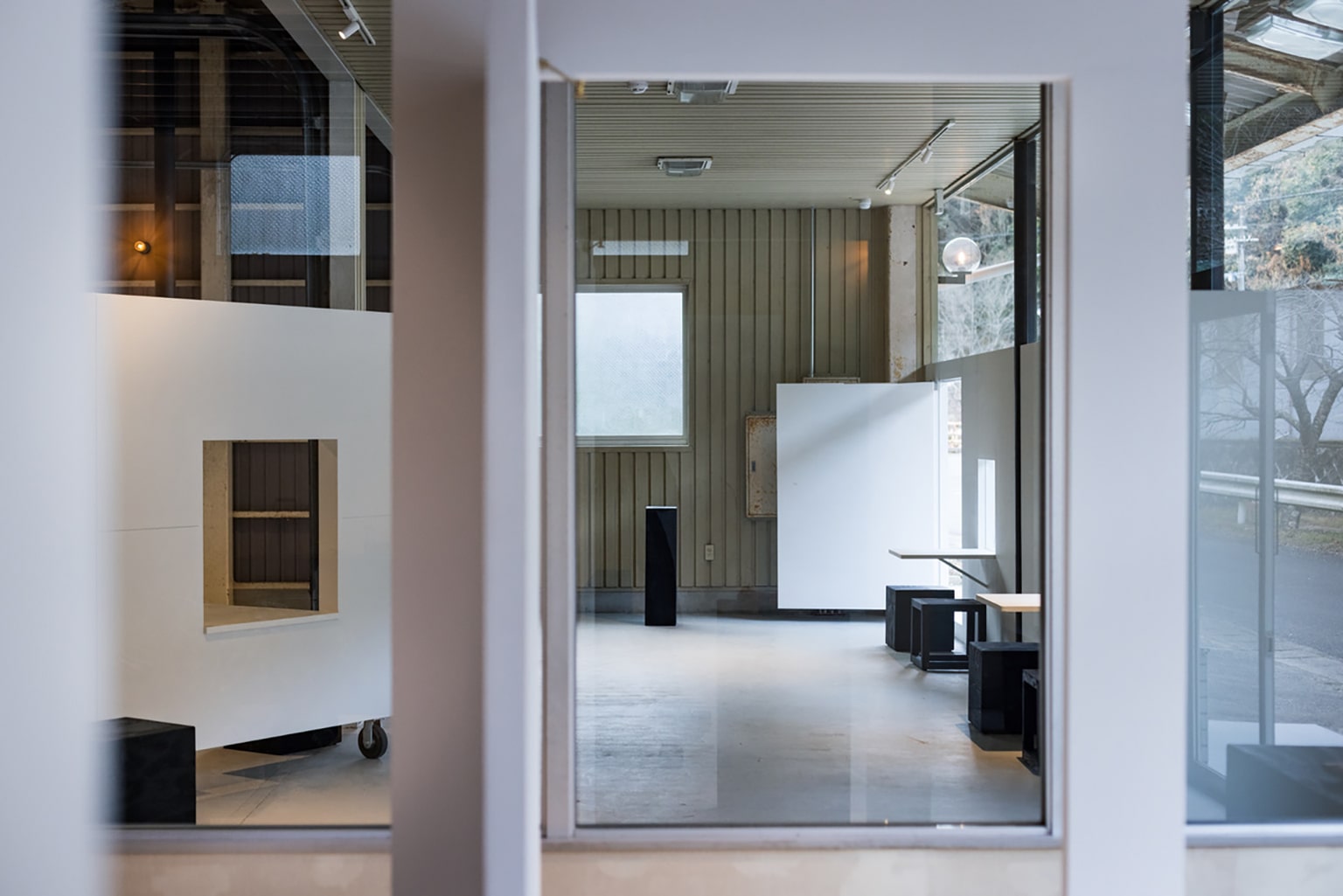
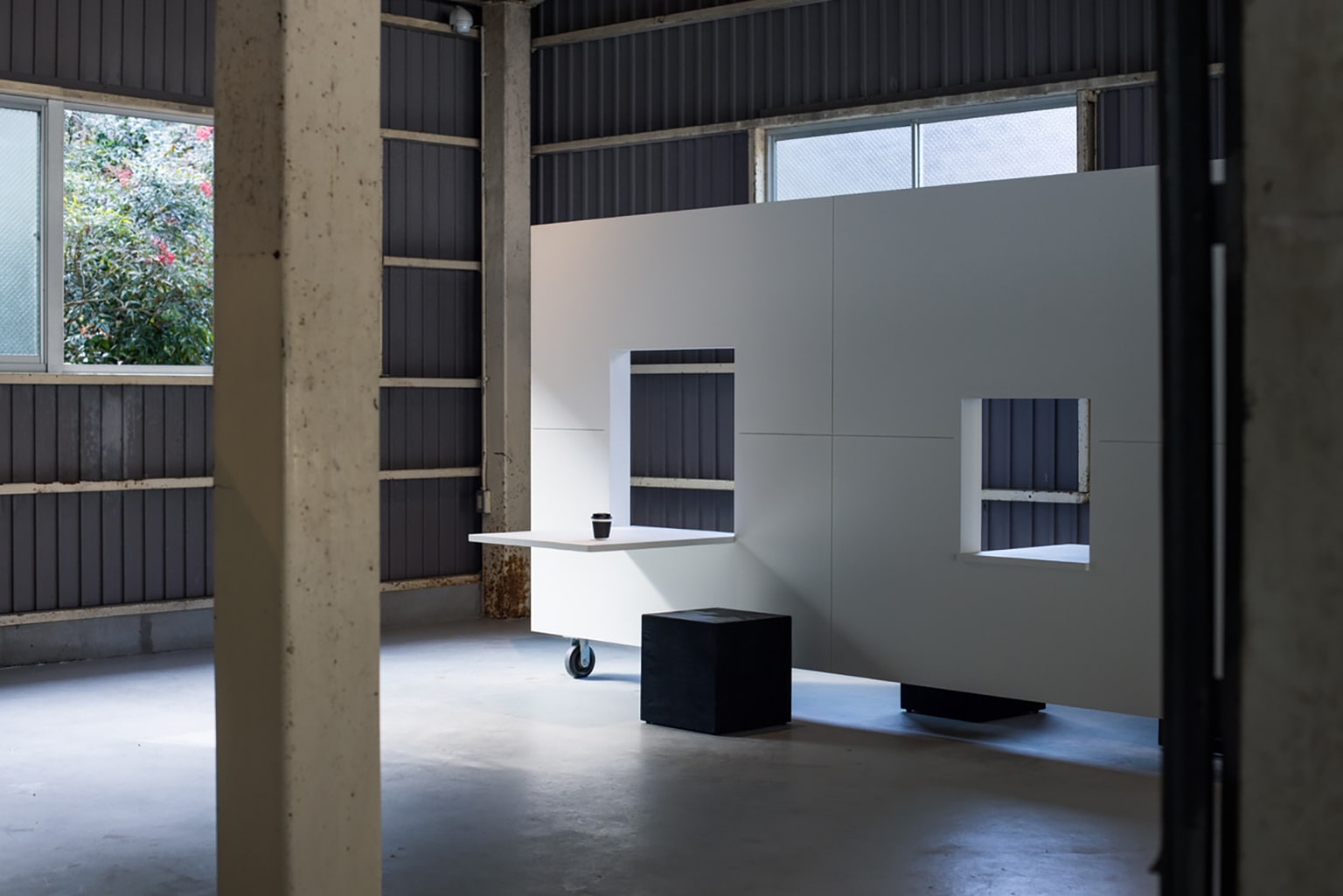
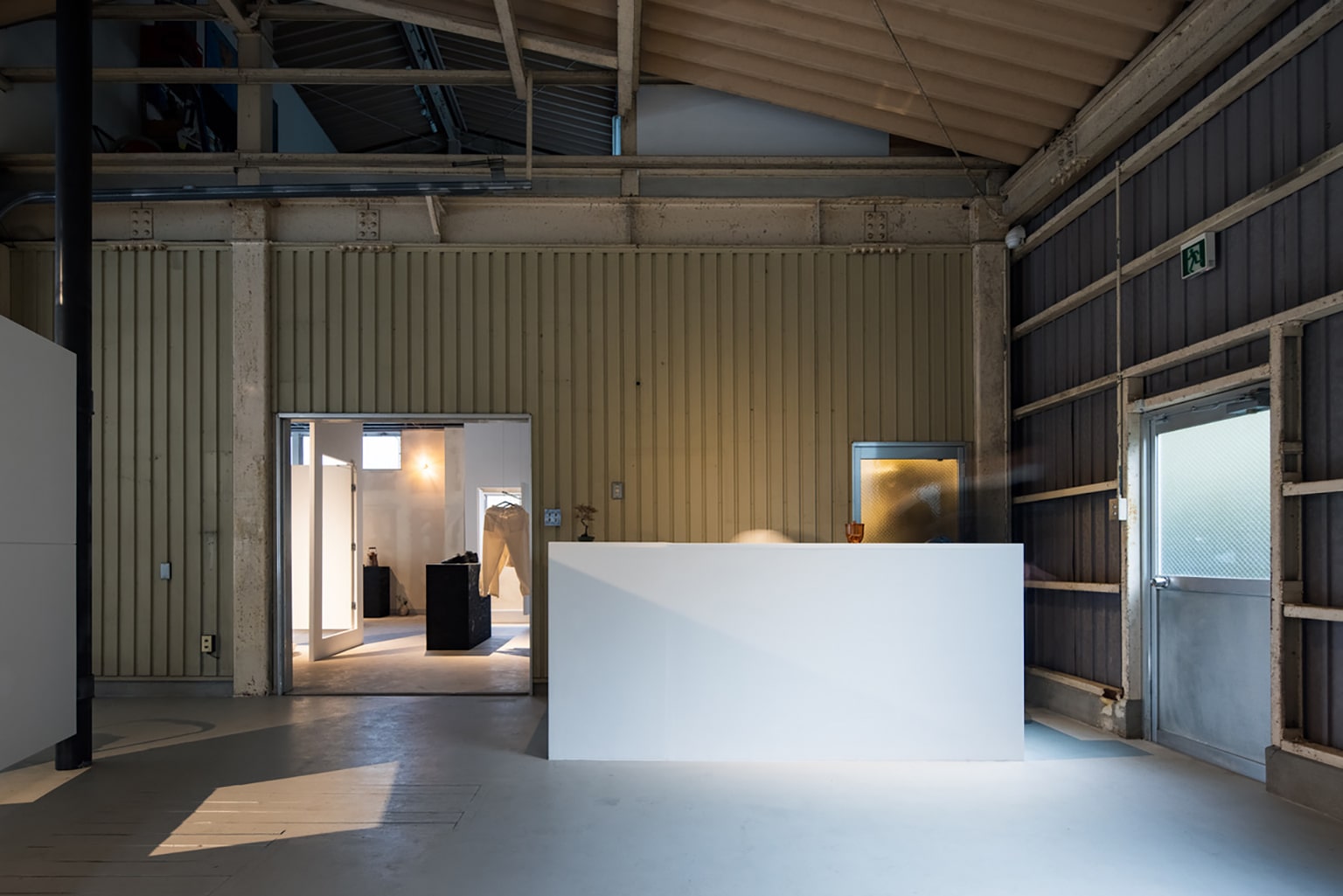
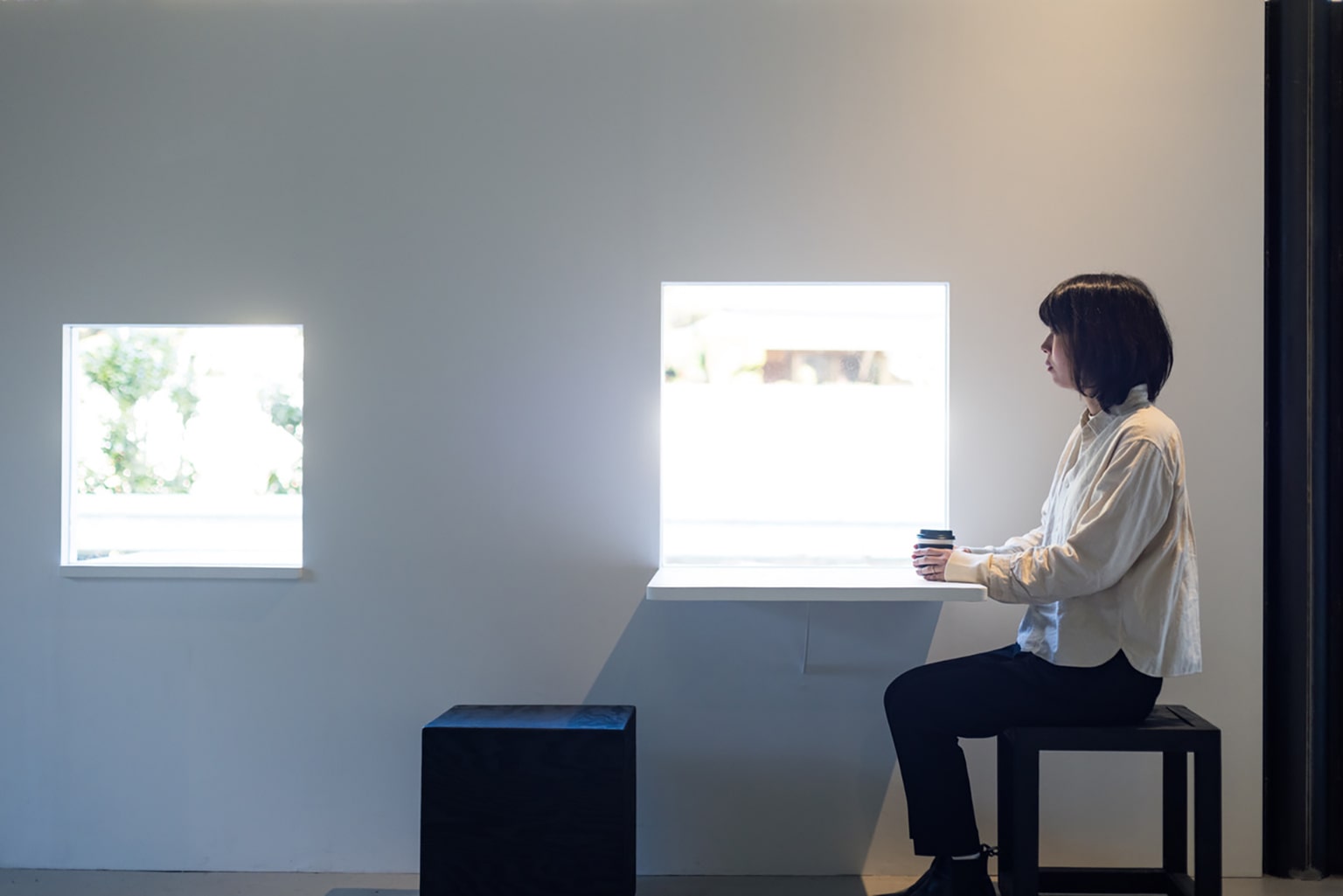
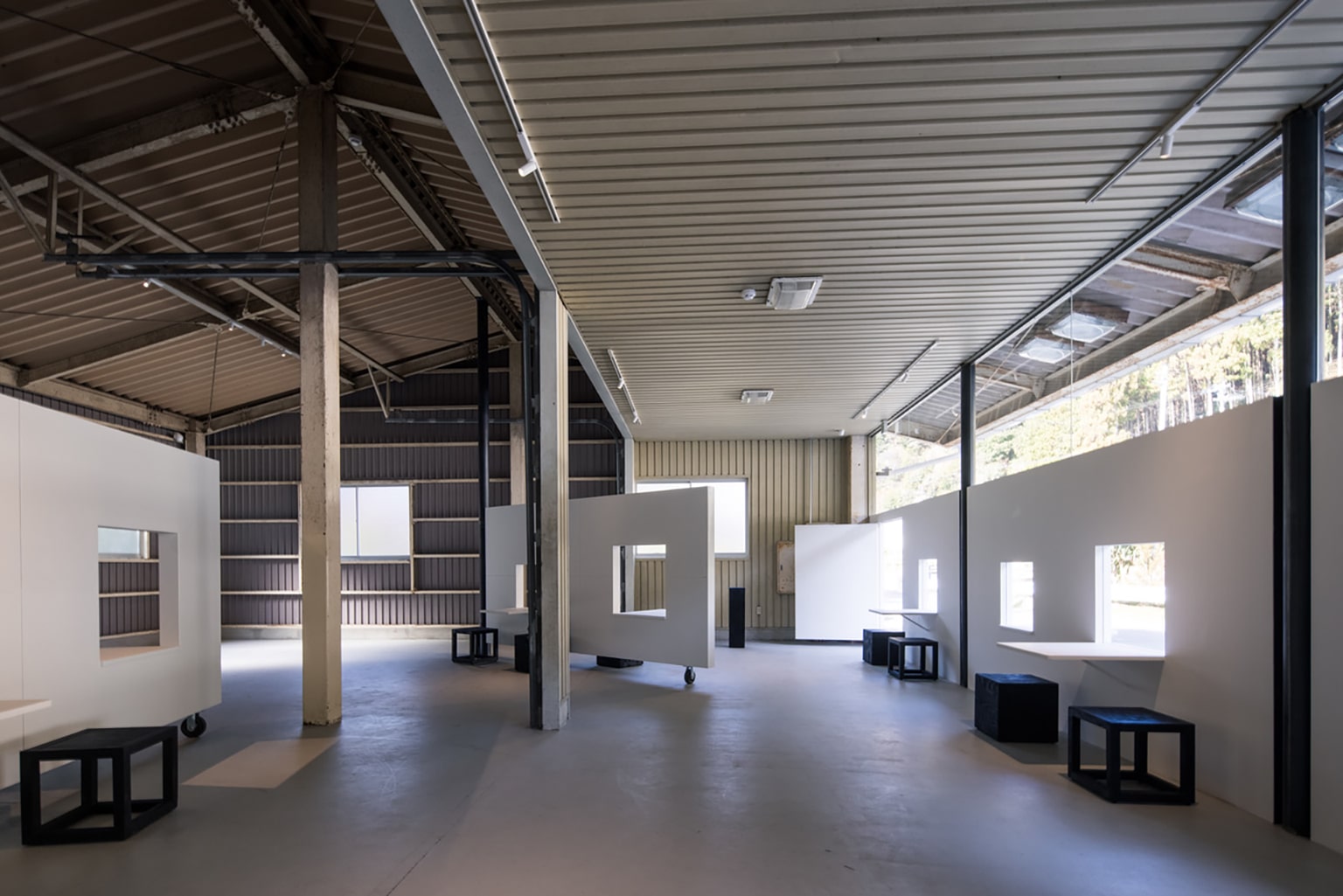
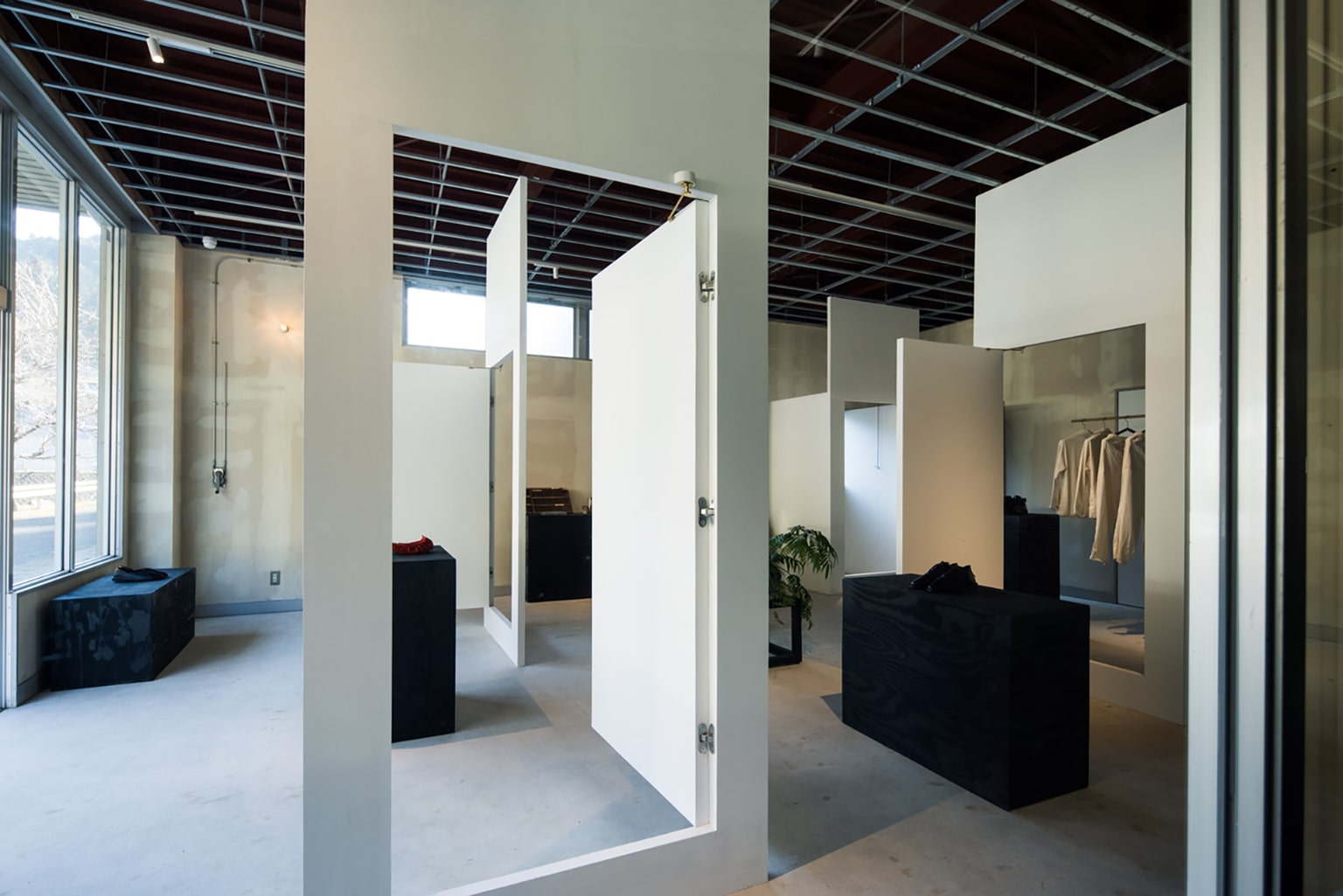
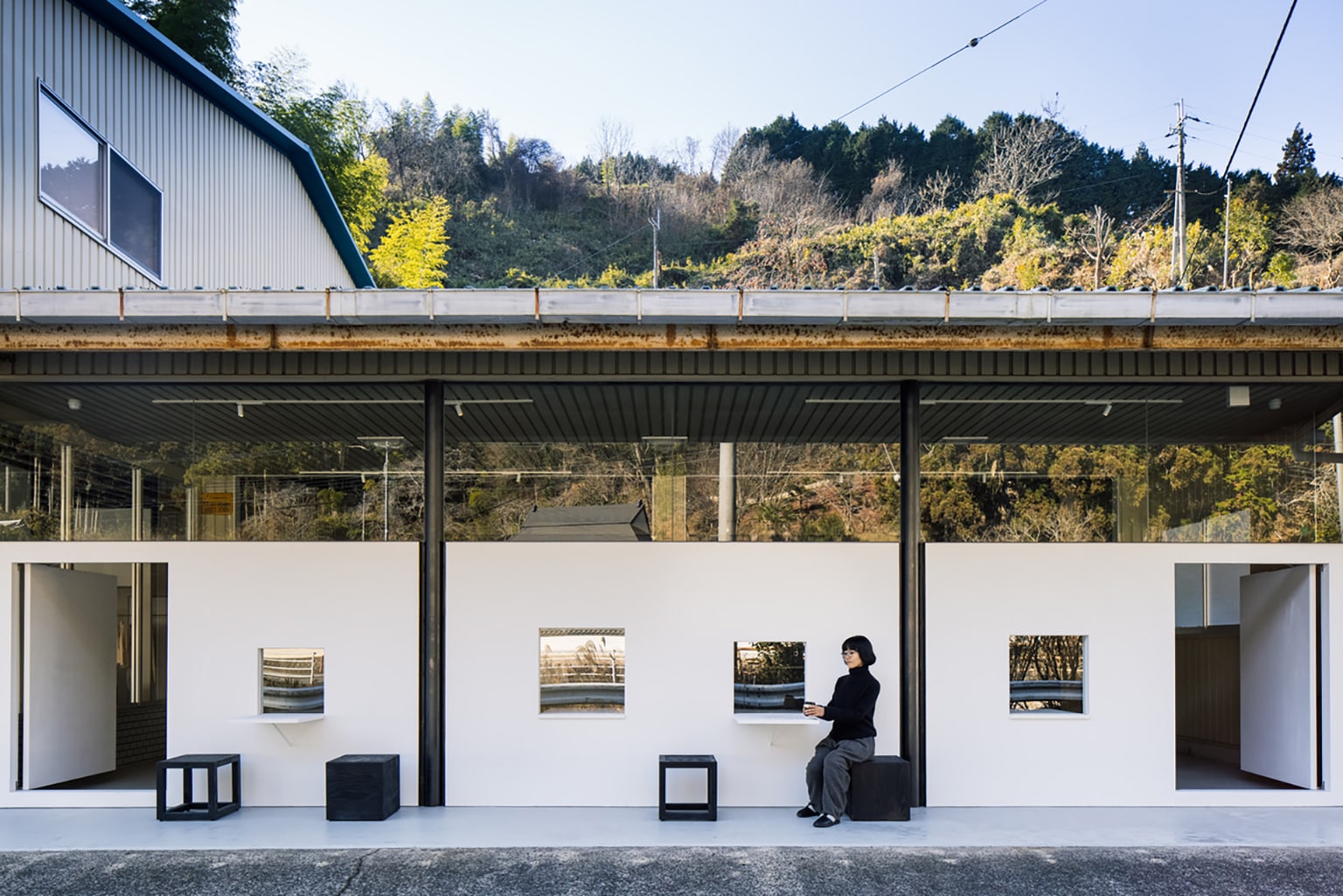
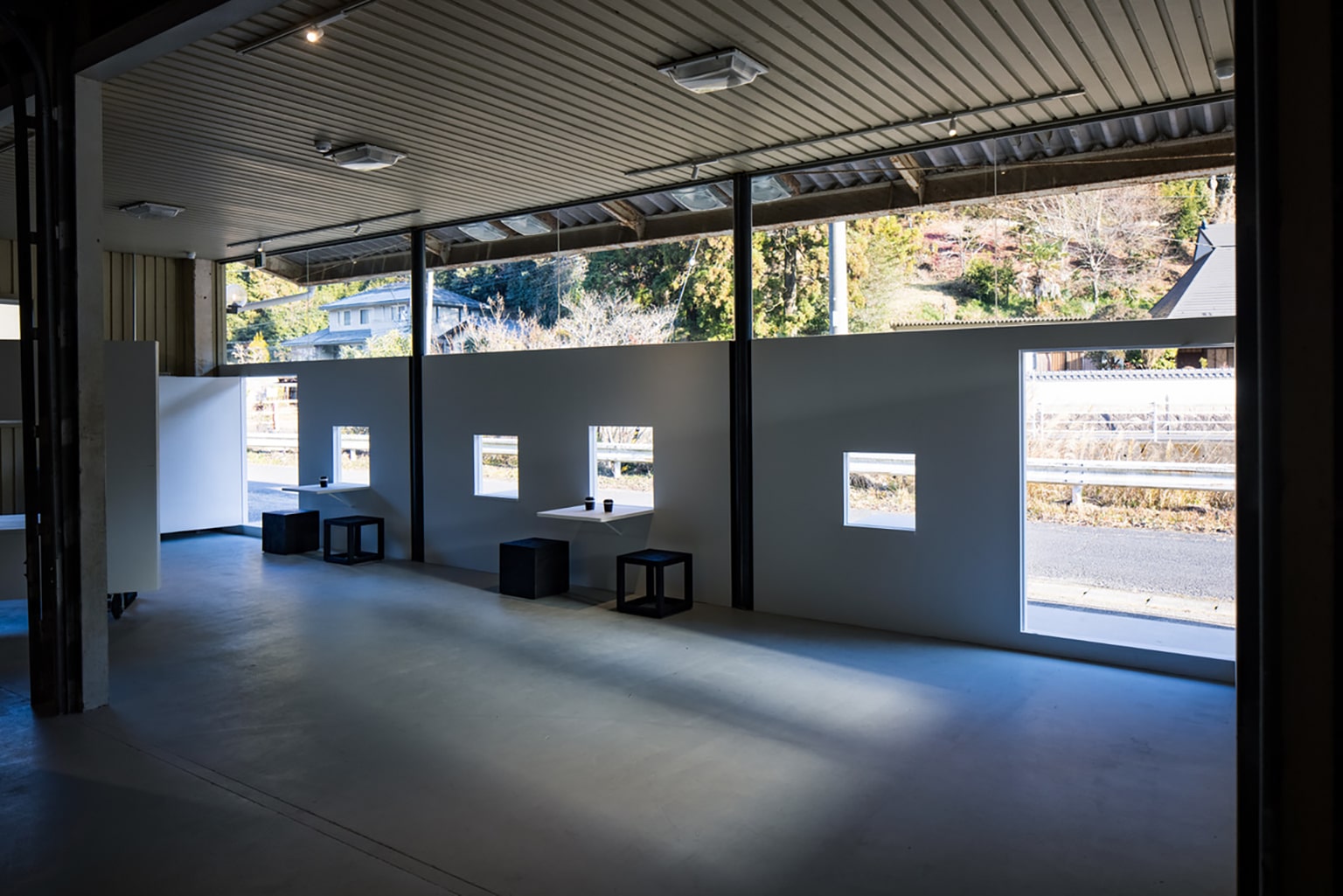
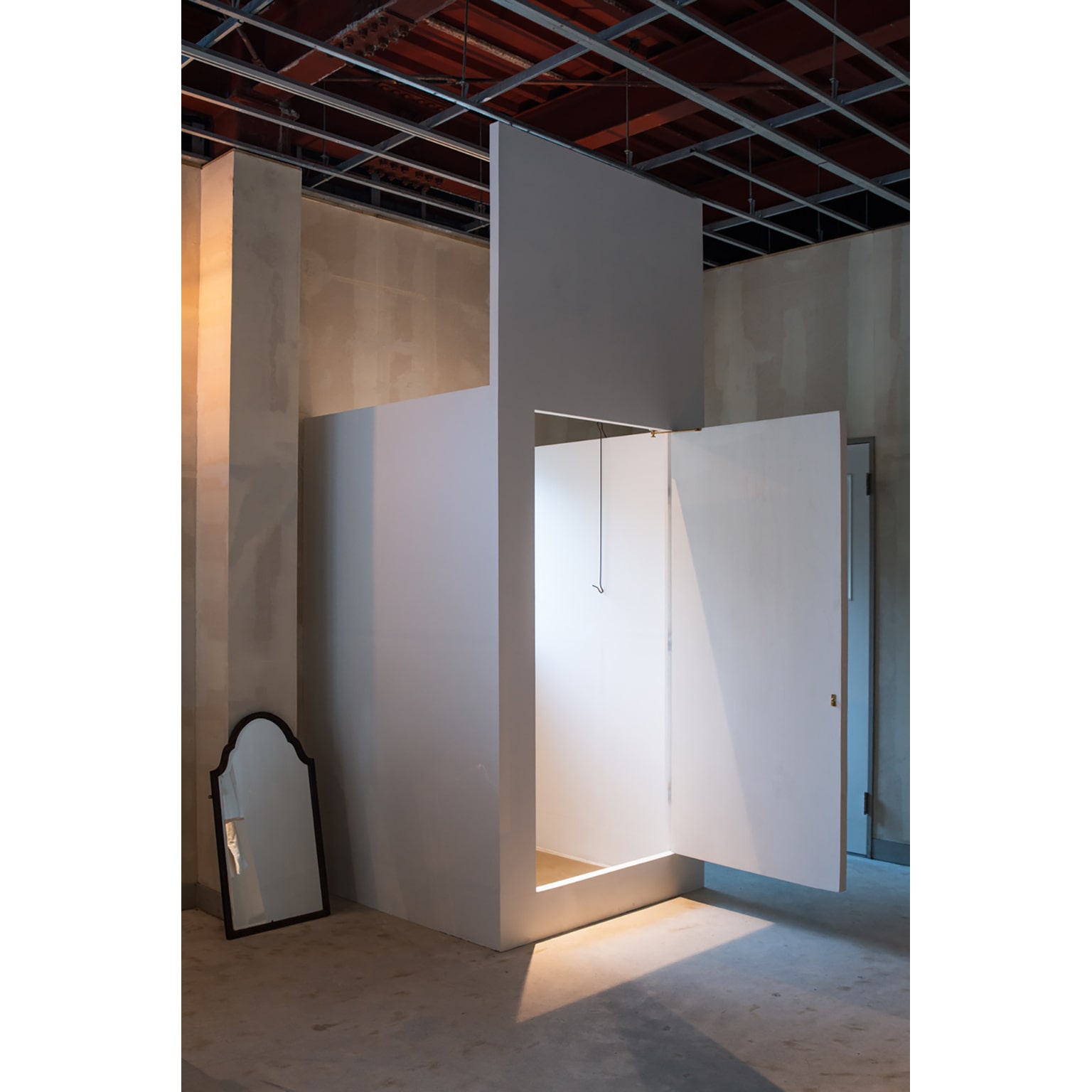
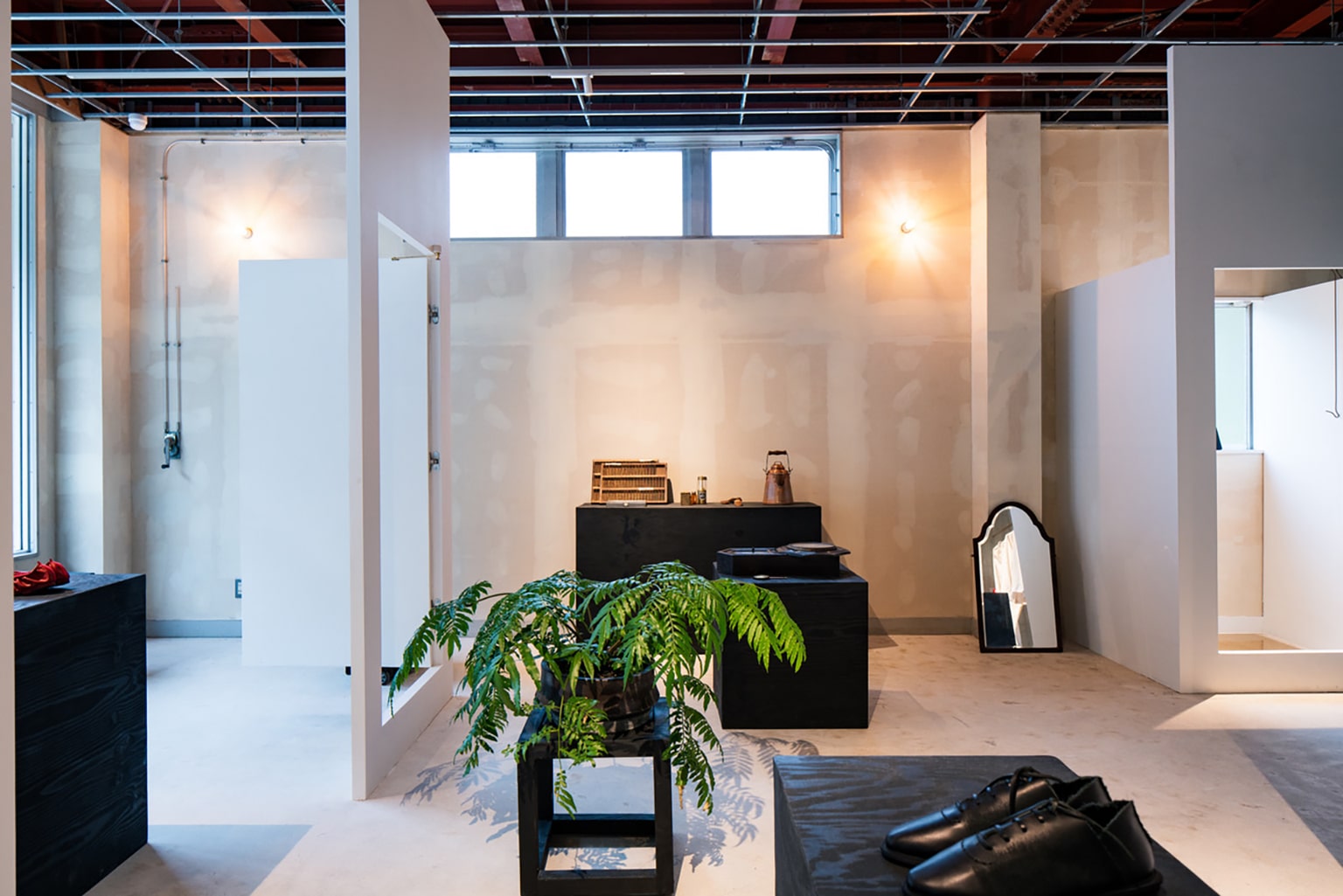
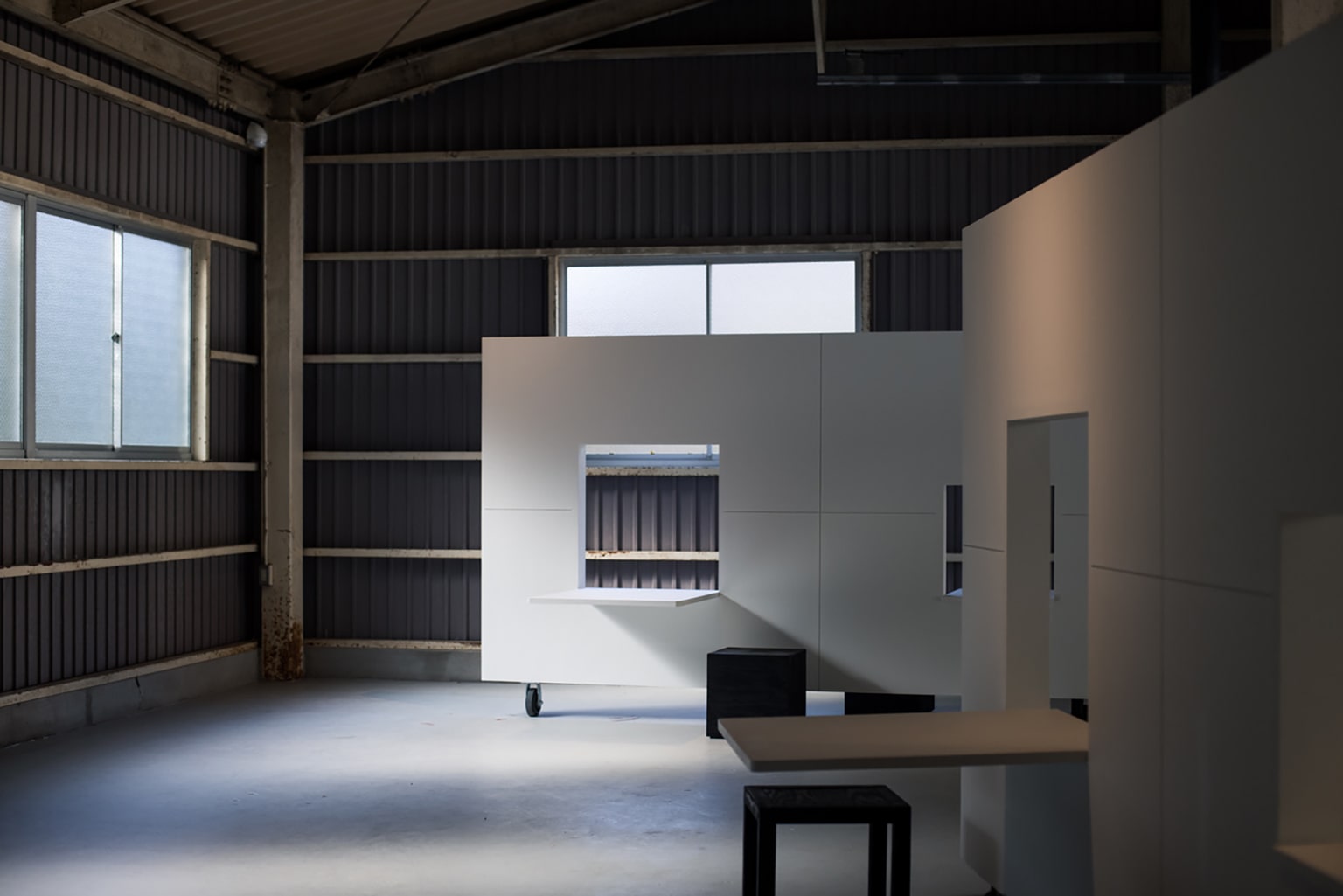
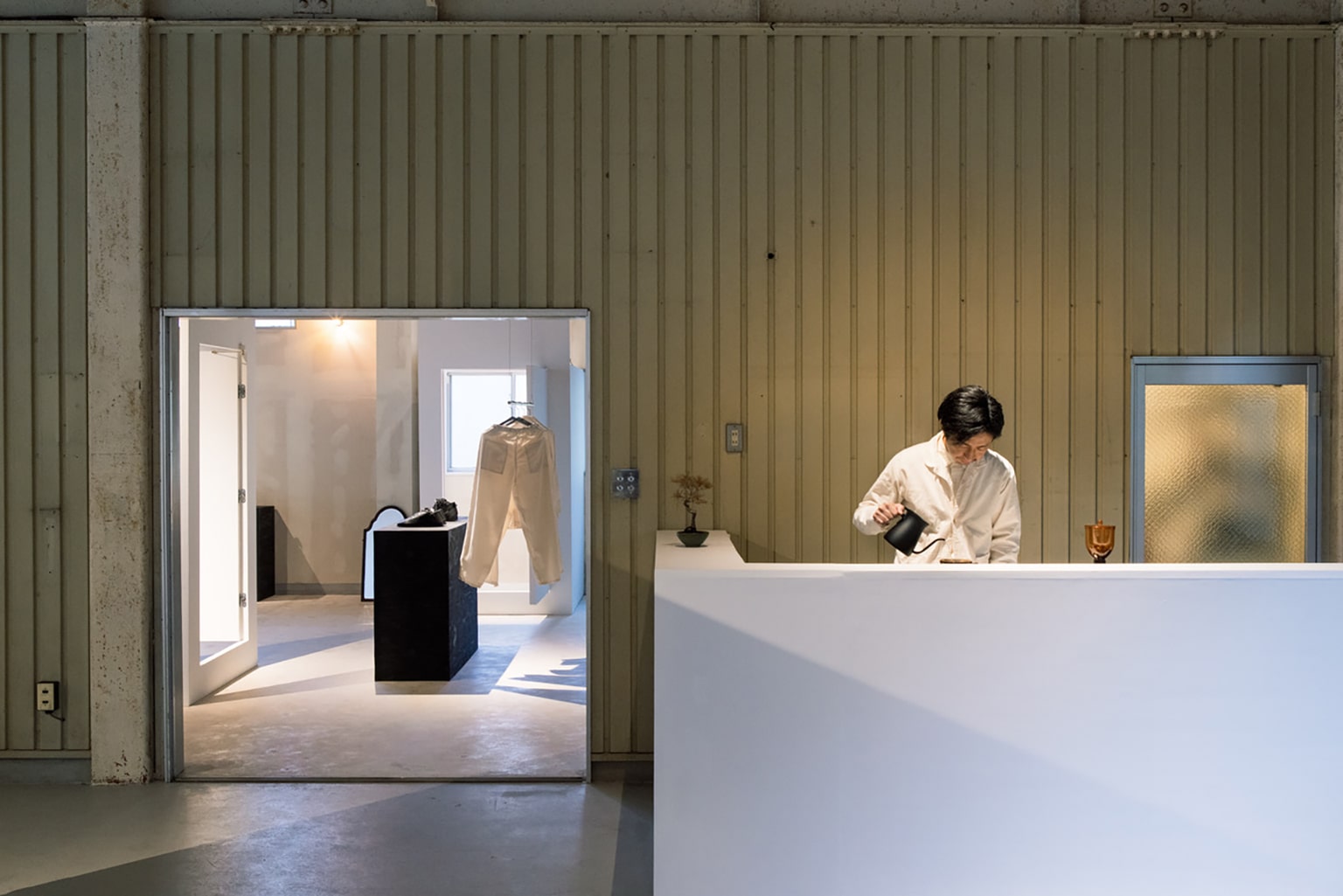
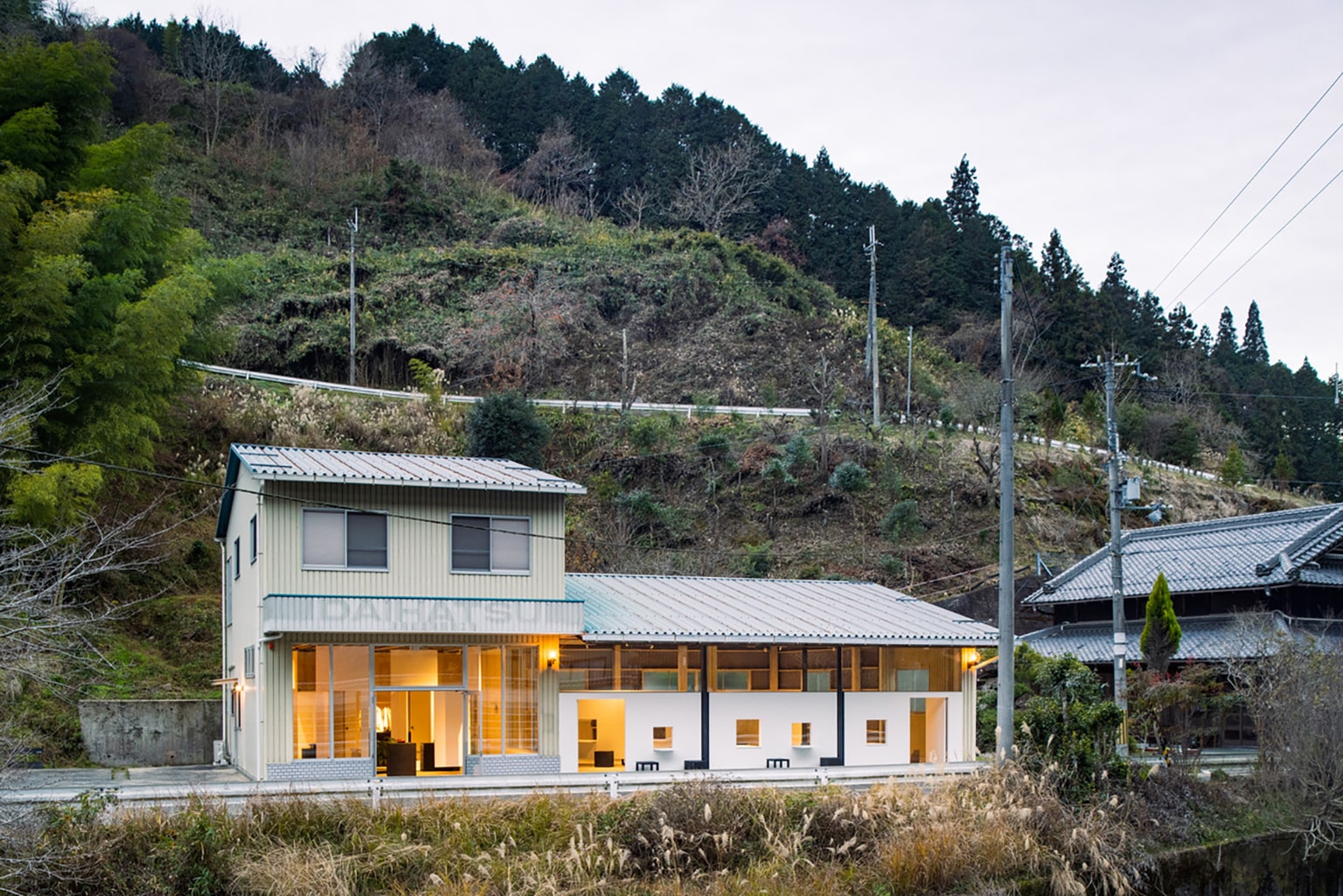
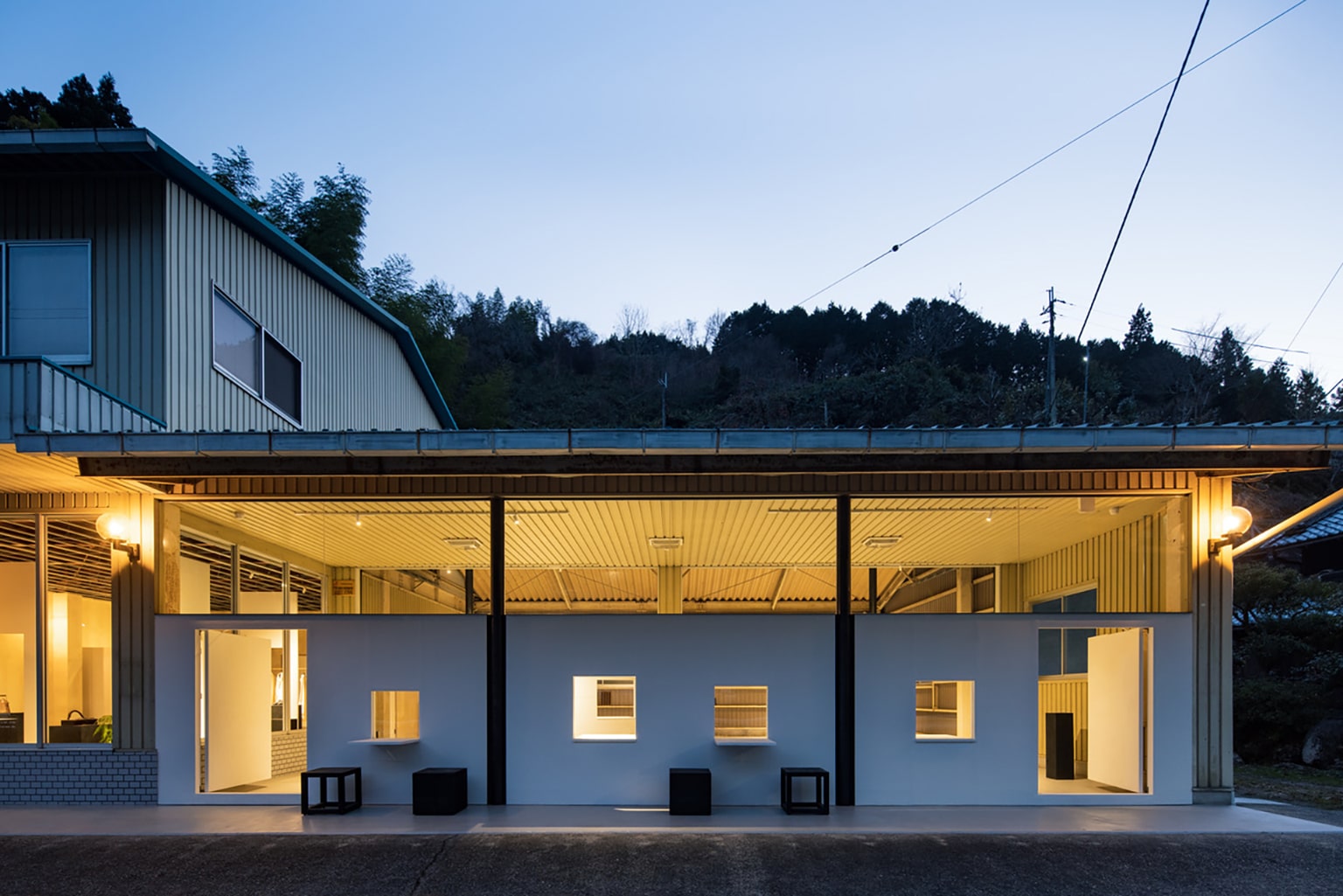
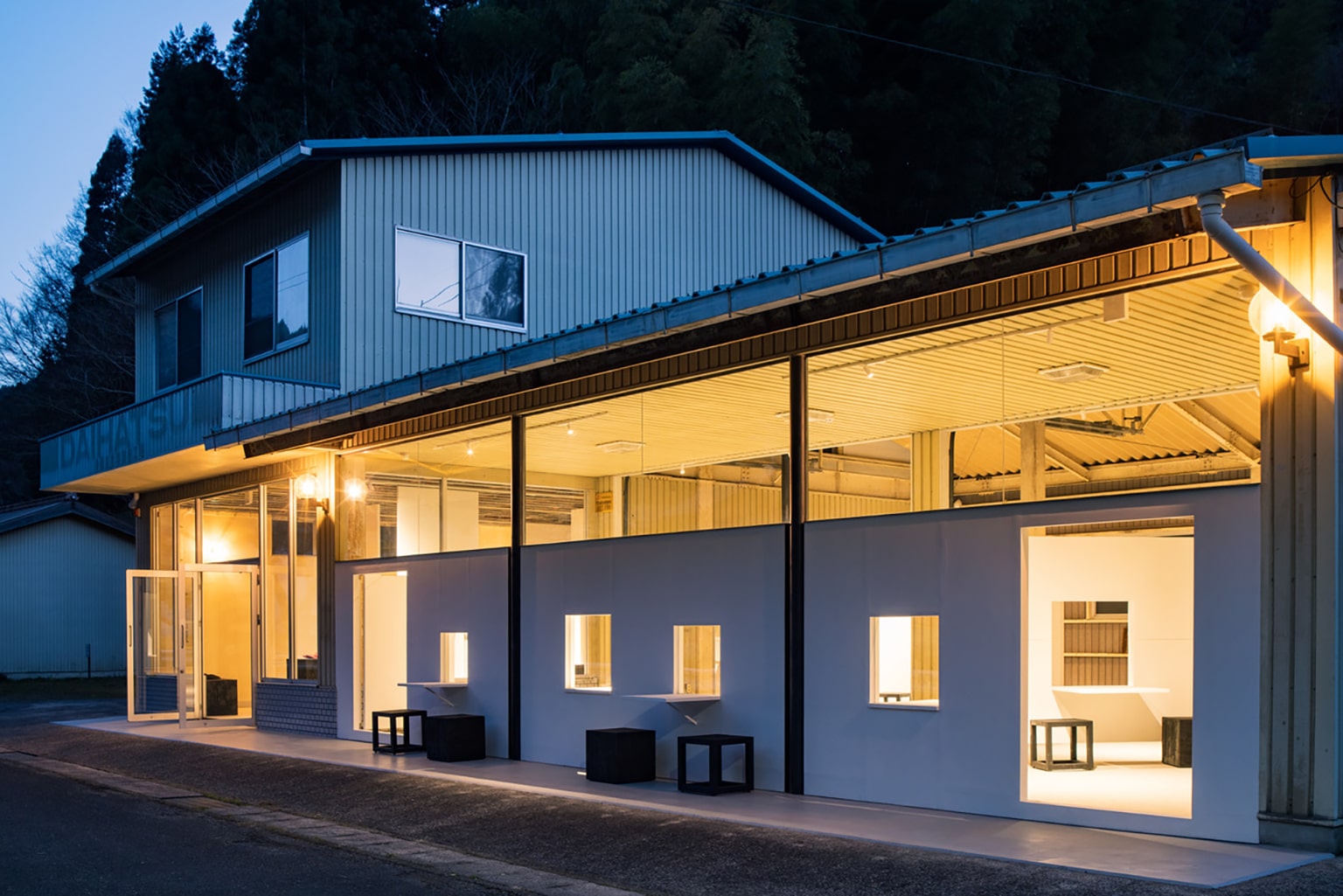
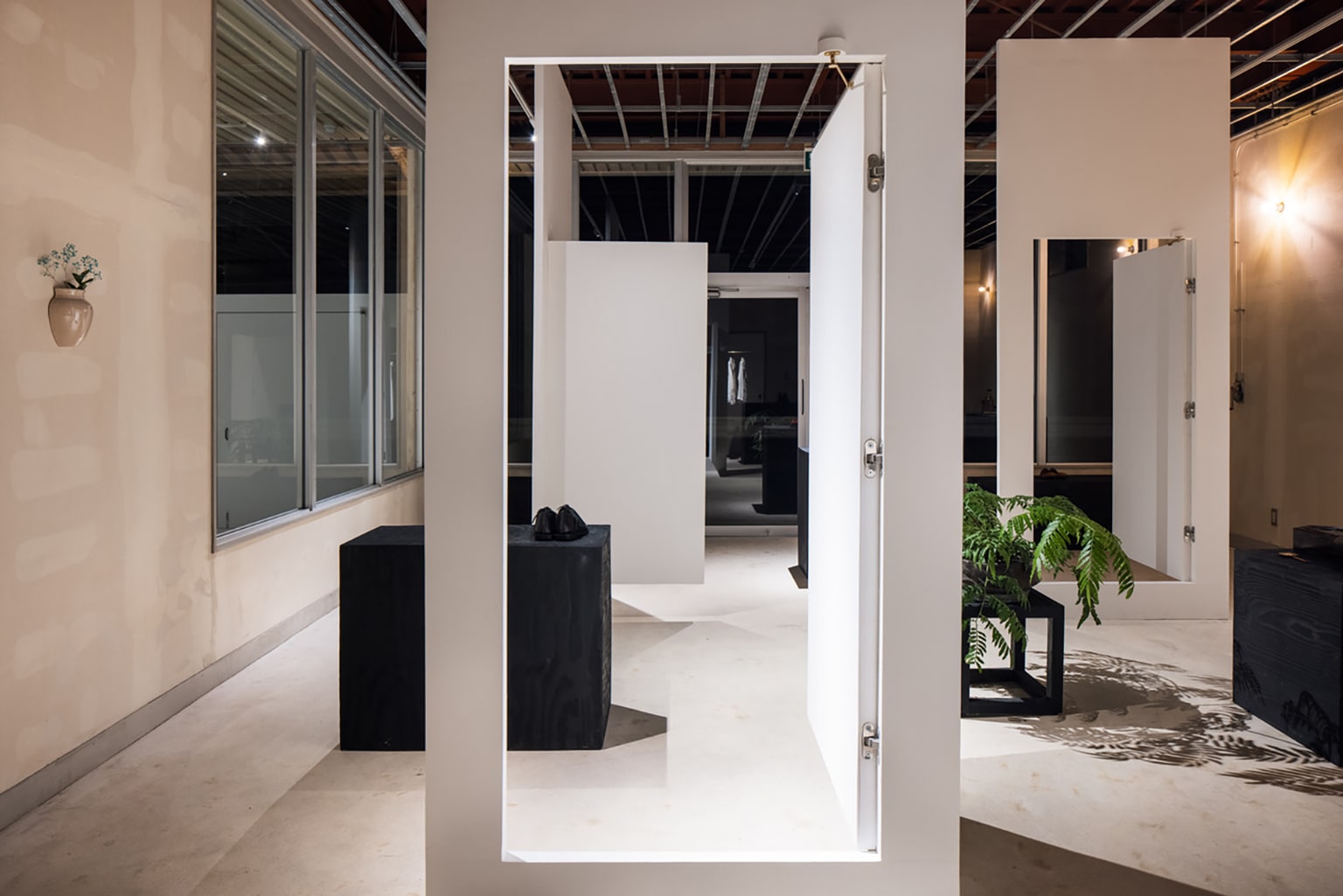
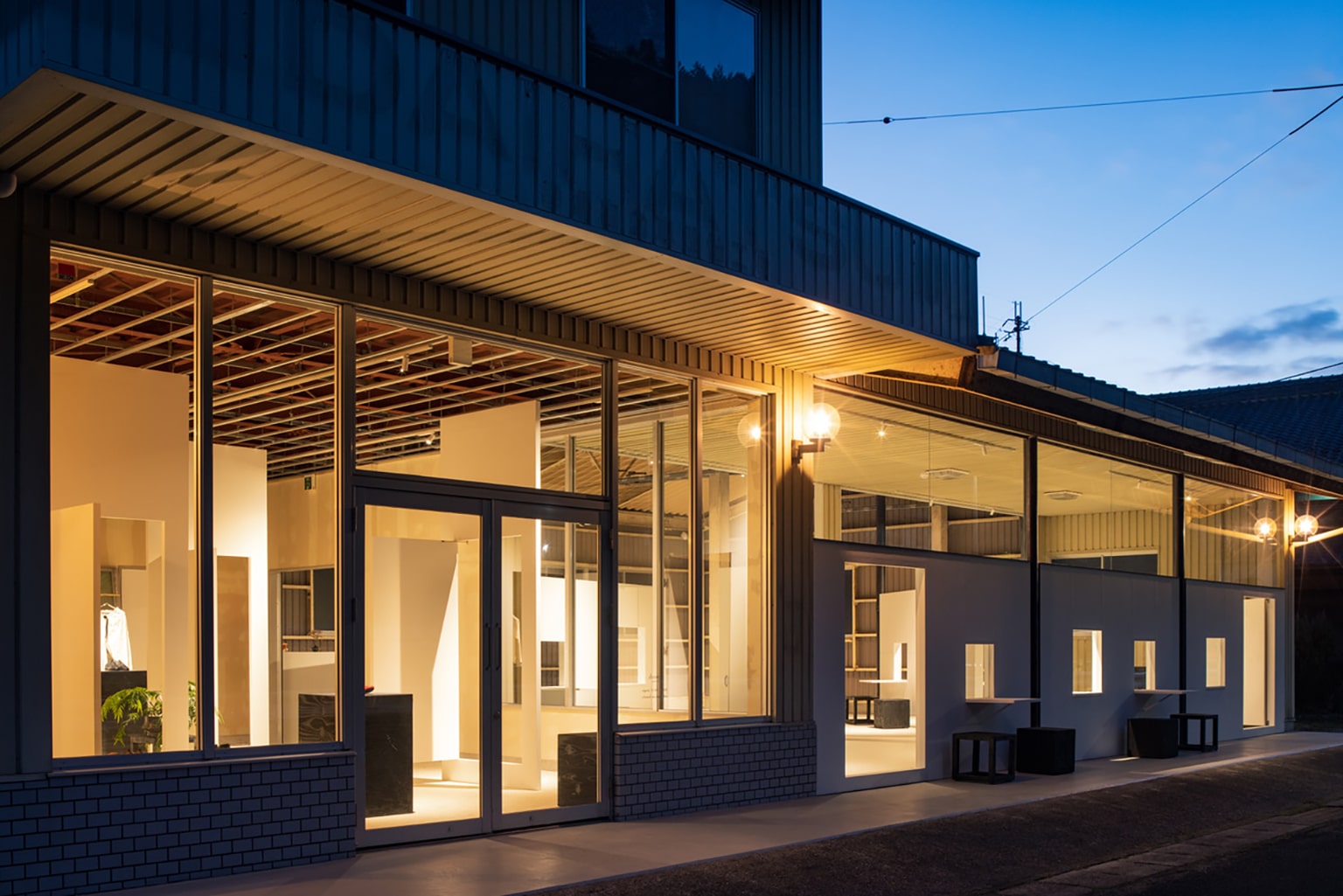
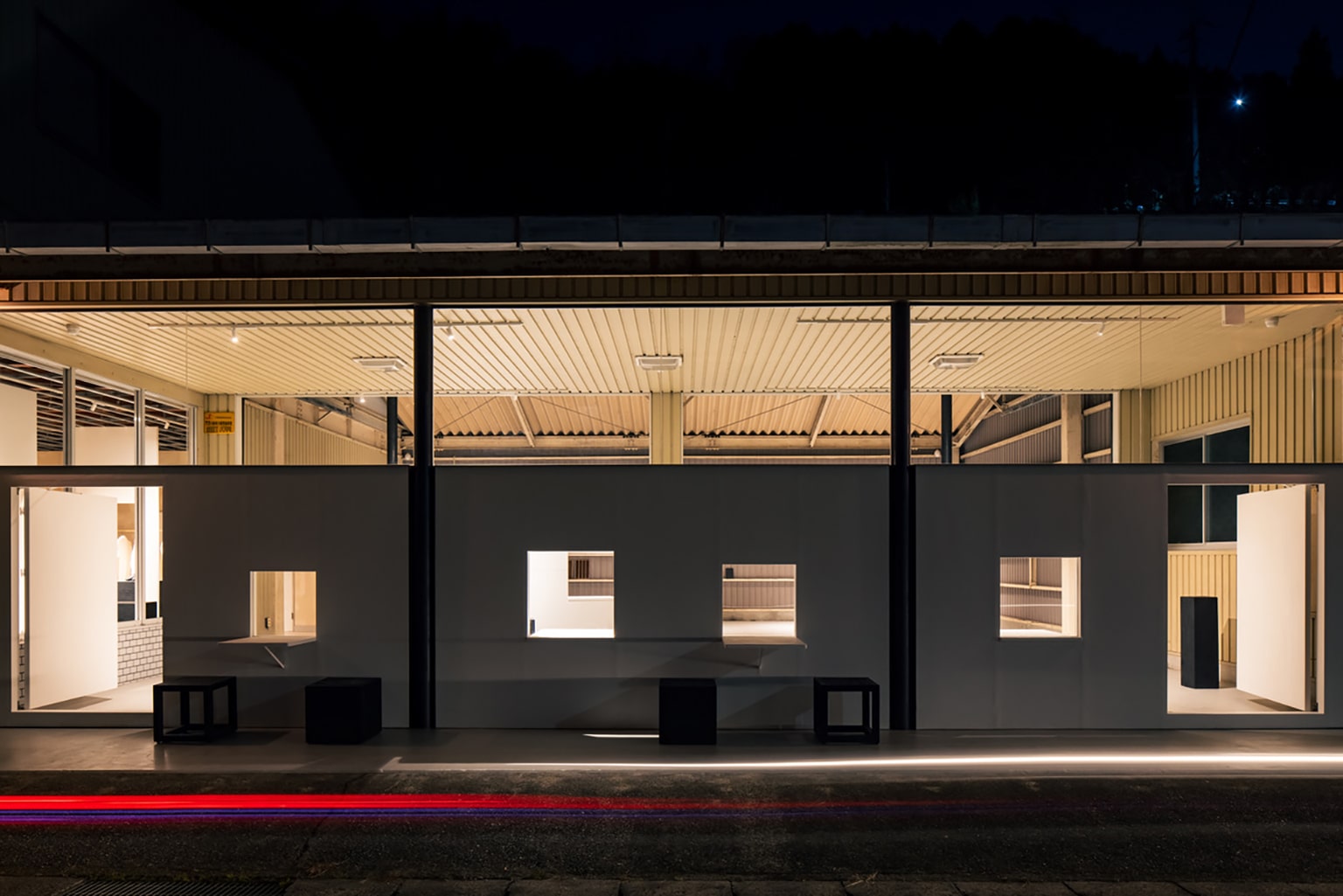
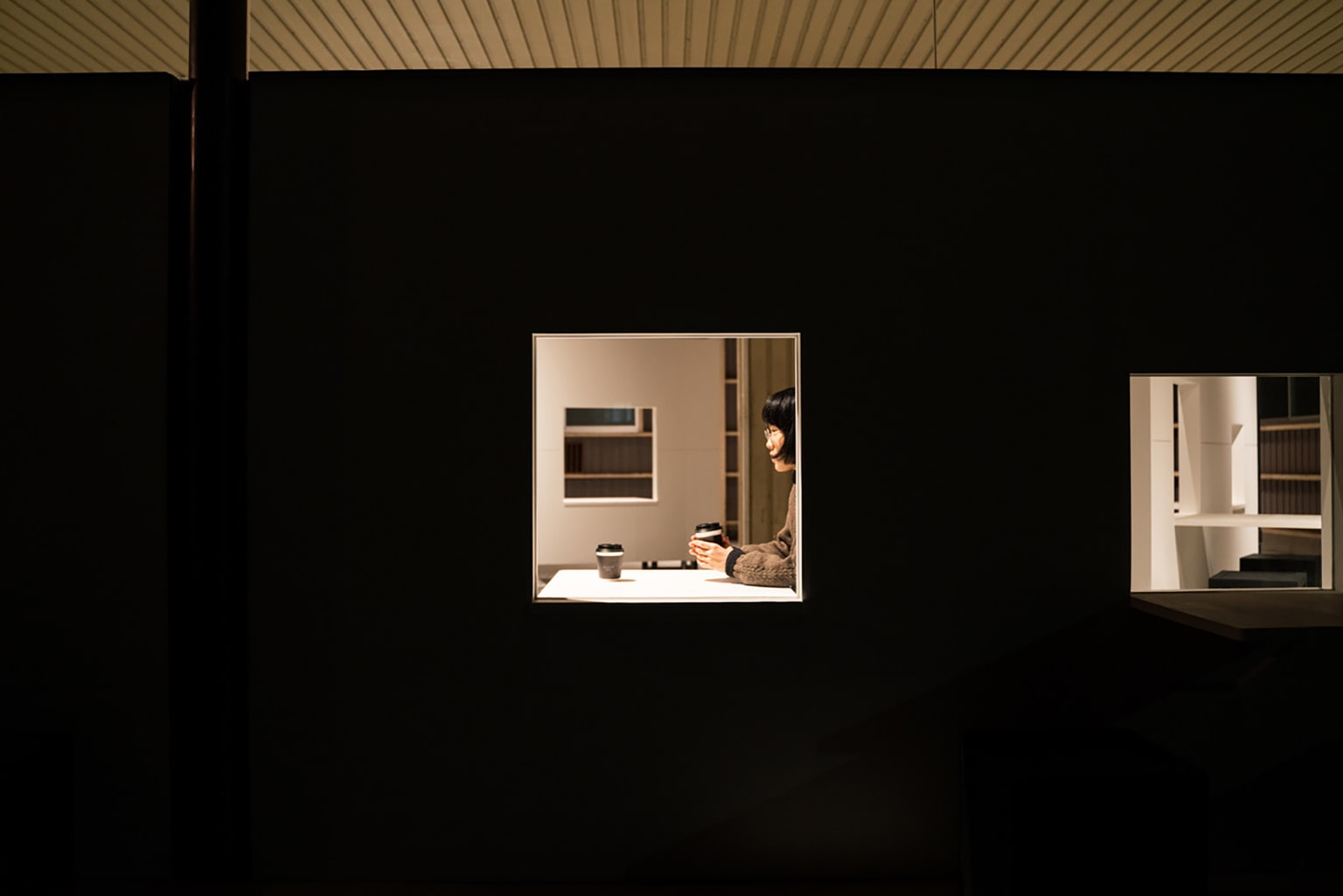
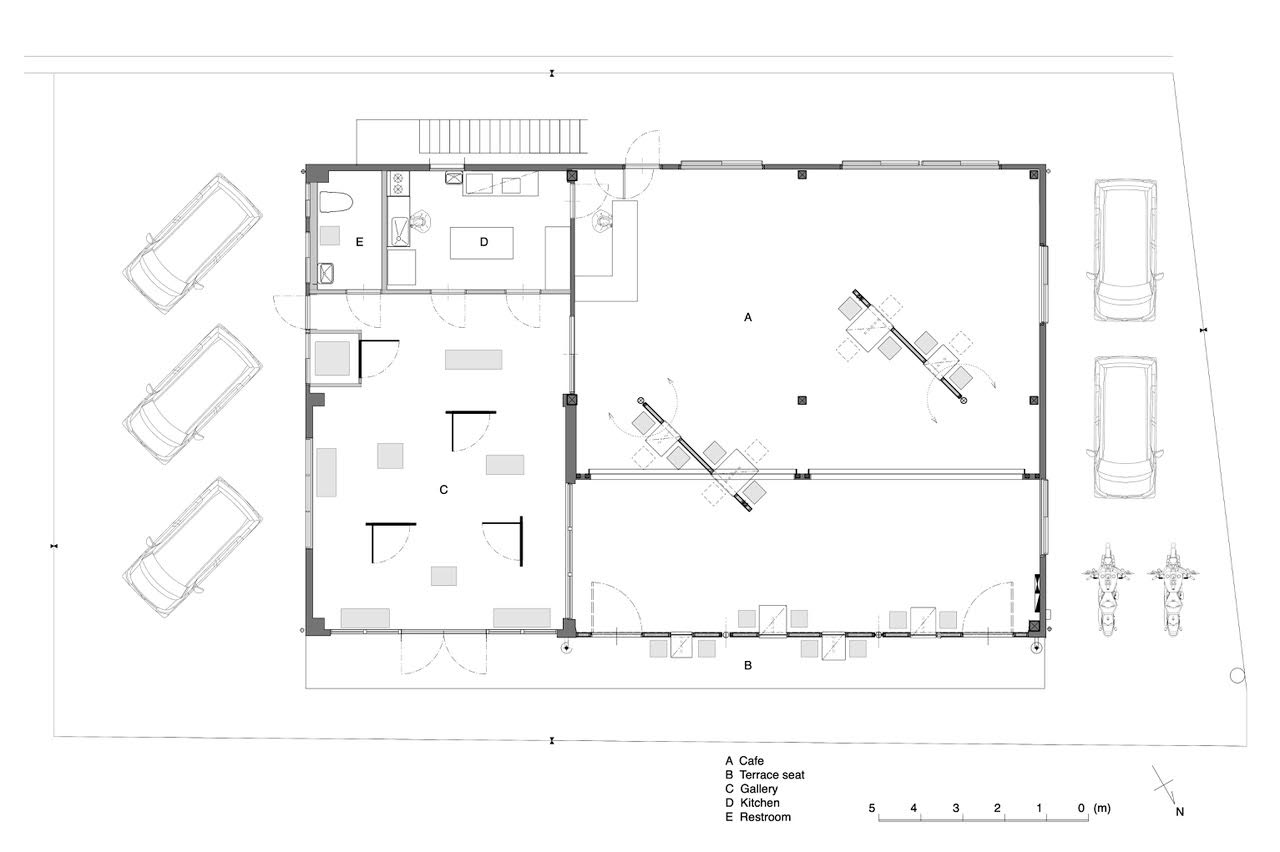
Located in a rural area in the mountains of Nara, Japan, a former auto repair shop was converted into a café with a gallery space. The owner requested to have his advertising design company on the 2nd floor, while making the 1st floor a place to offer exposure to design and convey ideas behind it. In response, we looked at the name of the company “IN to OUT” and associated it with a series of notions; “inside and outside,” “appearance and content,” “entrance and exit,” and “past and the future.”
What exists between “IN and OUT” are doors and windows. We explored ways to produce various experiences and functionalities by operating them. Doors and windows are the physical elements to allow the air and people to go in and out, and at the same time, they act as a breakpoint in our awareness as well as a linkage between surrounding scenery and us. Doors and windows present themselves as “gates” in symbolic gestures, allowing us to feel and experience a new world and a new sense of value. The unique relationship between a rural village and design creates space that anyone can share and appreciate.
Steel-pipe columns and walls are installed under the eaves to secure spacious interior space for the cafe. The height of the exterior wall is kept low, so the glass windows installed above cut out the scenery of trees on the mountain across the café and rows of cherry trees along the river. Tables at the small windows stick out alternately to inside and outside. Sunlight shines into the interior seating area during the day, while interior lighting illuminates the exterior seating area in the evening.
At the center of the café space, pivoting door leaves rotate around steel-pipe columns as their axes. The rotation of these large door leaves divides the space in various ways, producing variations in volumes and margins within the space. The tables and small windows are unified with the door leaves. We hope visitors find their whereabouts by rotating these doors. Those small windows are inspired by car windows, while the scale of the rotating door leaves is based on the silhouette of a car. Cars and agricultural vehicles used to come and go for inspection and repair works when this place was an auto repair shop—such memory is reflected in the new space as an afterimage.
Custom stools in the café space have two variations, “open” type and “close” type, in the same external dimensions. The two variations represent paring notions of “inside and outside,” “existing and not existing,” and “IN and OUT.”
The former office space of the auto repair shop is transformed into a gallery space for holding exhibitions and selling miscellaneous goods. The display space can also be altered by the opening and closing of door leaves. The door leaves themselves can be used as display settings, inviting us to cross over the threshold and walk about.
The remnants of the former auto repair shop, such as defects and rust, are kept as much as possible. These traces are highlighted further by installing new elements, rather than concealing and covering them up, so that the past is not negated in order to inherit the history and stories of this place to the future. Visitors can also think of their past and future.
Visitors from large cities can fully appreciate the breadth of space and scenery unique to the rural region, while local residents can also experience the joy and pleasure of designing.
What are connected and linked by doors and windows are the notions of “inside and outside,” “past and current,” “rural village and design,” and “people and things.” This space now is where people can recognize and become aware of the interplay of these notions.
農村の自動車整備工場を改装したカフェとギャラリーです。店主は広告デザイン会社を経営しておりデザインの体験と思想を伝える場にしたいとの思いがありました。そこで店主の社名「INtoOUT」から発想し、内と外・入口と出口・過去と未来などを空間のテーマとしました。
INとOUTの間にあるもの、それは扉や窓です。その開閉により体験や機能を生みたいと考えました。扉や窓は空気や人が出入りするもの。一方で意識の区切りや人と風景を繋ぐものでもあると思います。扉や窓が新しい世界の入口として象徴的に存在する。農村とデザインという異質な関係でも実体験により誰もが楽しめると考えました。
軒先には鋼管と壁を立て室内を広く確保しました。山や桜並木の風景を窓が切り取ります。小さな窓は採光と視覚効果により、人々に内外の関係性を意識させます。
カフェでは鋼管を軸に扉が回転します。様々に空間のボリュームと余白を変化させます。扉を回転させ好きな居場所を見つけて欲しいと思います。小さな窓は車窓であり、回転扉は自動車のシルエットをイメージしたもの。昔、修理のため出入りした自家用車や農業車。その記憶を残像として表しています。
ギャラリーでも扉の開閉が空間領域を変化させます。扉は商品や展示に応じた可動間仕切りであり、導線であり、敷居を跨ぐことで意識の区切りをうみます。
工場の躯体や傷は極力覆い隠さず、引き立てるように新規をインストールすること。それにより過去は否定されず、歴史や物語をつなぐことができると考えます。
扉や窓が繋ぐもの。それは中と外、人と物、昔と今、農村とデザイン…。その行き来を楽しめる場所になったと思います。
Project / doors yamazoe
Open / July, 2020
Floor space / 194.6 sqm
Location / Yamazoe, Nara, Japan
Client / INtoOUT&Co.
Architects / Yagyug Douguten
Design team / Fumitaka Suzuki, Marie Iwata
Art direction / Kosuke Nagamitsu (INtoOUT&Co.)
Cafe exterior and construction work / Kazuhisa Kajikawa (Token Construction)
Electrical equipment / Yuichi Matsumaru (Matsumaru Electric)
Waterworks / Higashikawa equipment
Disaster prevention equipment / Araya disaster prevention
Signs +Post Hardware / Jimmy motorcycles
Contractor / Masahiko Nagamitsu (Masa Koubou)
Photographs and Movie / Kiyoshi Nishioka